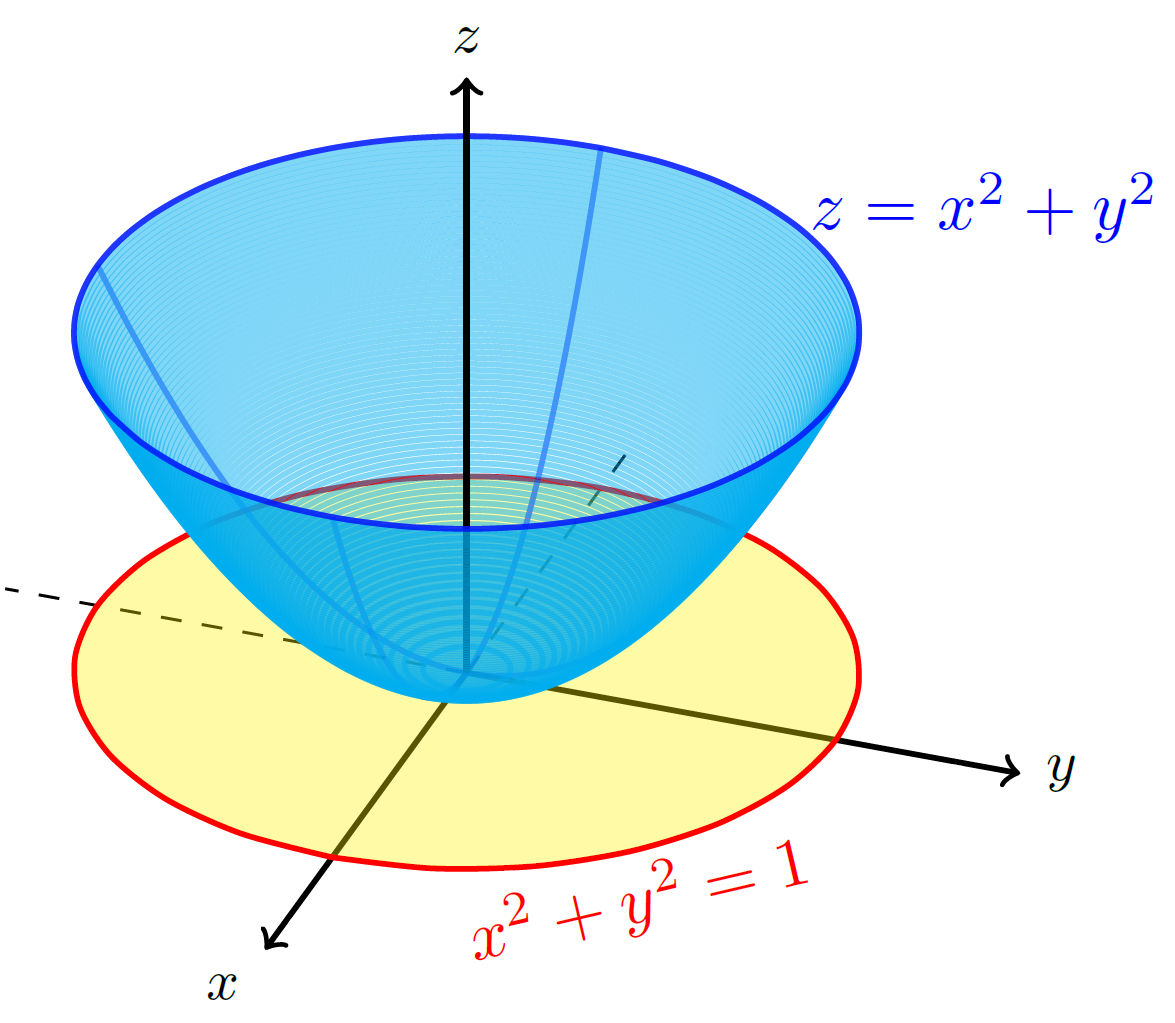Edit and compile if you like:
\documentclass{article}%% File name: classic-paraboloid.tex% Description:% The graph of the surface% z = x^{2} + y^{2}% is generated. Also, the region x^2 + y^2 \leq 1% is shown.%% Date of creation: April, 23rd, 2022.% Date of last modification: April, 23rd, 2022.% Author: Efraín Soto Apolinar.% https://www.aprendematematicas.org.mx/author/efrain-soto-apolinar/instructing-courses/% Terms of use:% According to TikZ.net% https://creativecommons.org/licenses/by-nc-sa/4.0/%\usepackage{tikz}\usetikzlibrary{patterns}\usepackage{tikz-3dplot}\usepackage[active,tightpage]{preview}\PreviewEnvironment{tikzpicture}\setlength\PreviewBorder{1pt}%\begin{document}%\tdplotsetmaincoords{60}{110}\begin{tikzpicture}[tdplot_main_coords,scale=2.0]\pgfmathsetmacro{\tini}{0.5*pi}\pgfmathsetmacro{\tfin}{1.85*pi}\pgfmathsetmacro{\tend}{2.5*pi}% Node indicating the equation of the circumference\draw[white] (1.35,0,0) -- (0,1.35,0) node [red,below,midway,sloped] {$x^2 + y^2 = 1$};%%% Coordinate axis\draw[thick,->] (0,0,0) -- (1.5,0,0) node [below left] {\footnotesize$x$};\draw[dashed] (0,0,0) -- (-1.25,0,0);\draw[thick,->] (0,0,0) -- (0,1.5,0) node [right] {\footnotesize$y$};\draw[dashed] (0,0,0) -- (0,-1.25,0);% The region of integration\fill[yellow,opacity=0.35] plot[domain=0:6.2832,smooth,variable=\t] ({cos(\t r)},{sin(\t r)},{0.0});\draw[red,thick] plot[domain=0:6.2832,smooth,variable=\t] ({cos(\t r)},{sin(\t r)},{0.0});
Click to download: paraboloid.tex • paraboloid.pdf
Open in Overleaf: paraboloid.tex
See more on the author page of Efraín Soto Apolinar.


